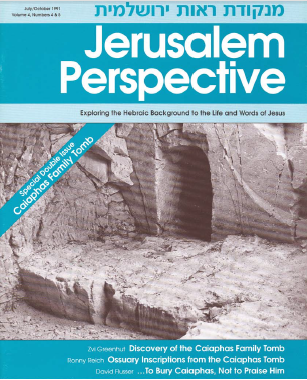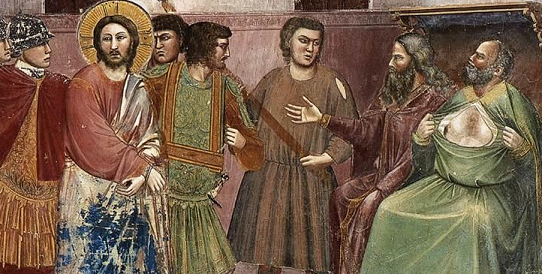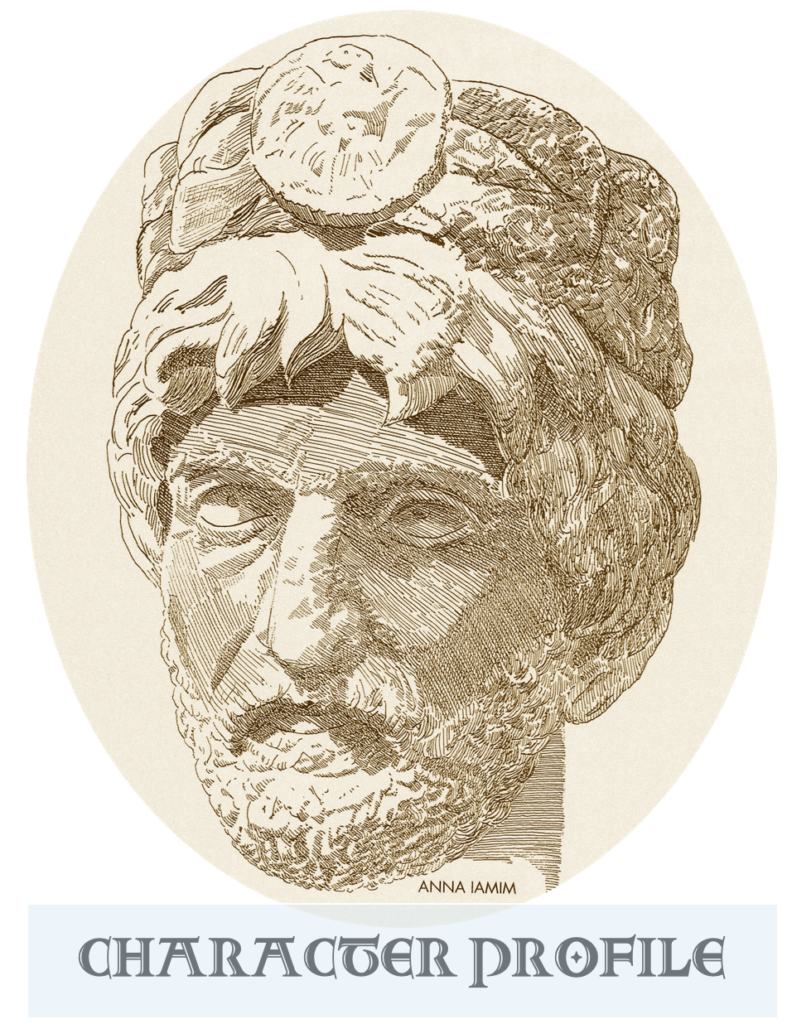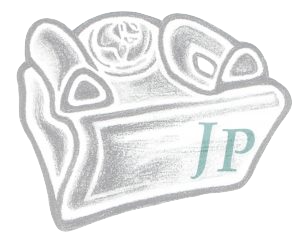How to cite this article: David Flusser, “…To Bury Caiaphas, Not to Praise Him,” Jerusalem Perspective 33/34 (1991): 23-28 [https://www.jerusalemperspective.com/2602/].
Caiaphas[1] is the most prominent Second Temple-period Jewish personality whose ossuary and remains have been discovered. I have used the occasion of this discovery to discuss Caiaphas’ personality and place among the high priests, and to explain some of the background to his fateful decision to eliminate Jesus and his disciples.[2] A careful reading of the gospel reports shows that the involvement of this high priest[3] in handing Jesus over to the Romans and persecuting his disciples was more decisive than it is commonly believed.
Both rabbinic sources and the recently discovered ossuaries show that the name Caiaphas was the designation for this whole family. The Tosefta speaks about the house of Caiapha (m. Yevamot 1:10), and Josephus refers to Joseph surnamed Caiaphas (Antiq. 18:35, 95). The surname קיפא/קפא (kayafa, Caiapha) appears on two of the ossuaries discovered in the tomb, and one of these is inscribed with the name יהוסף בר קיפא/קפא (yehosef bar kayafa, Joseph bar Caiapha).[4]
The family came from בית מקושש (bet mekoshesh, Beth Mekoshesh), a village in the vicinity of Jerusalem. This clan of high priests were descendants of the second wife of a family member from a levirate marriage. One of the family members, Elionaeus, the biblical אליהועיני (elyeho’enai)[5] was appointed high priest in approximately 44 C.E. by King Agrippa I.[6] Thus, two high priests are known who belonged to the Caiaphas family, the earlier one being Joseph (18-36 C.E.). It is even probable that the high priest Elionaeus was the son of Joseph Caiaphas.
Paid Content
Premium Members and Friends of JP must be logged in to access this content: Login
If you do not have a paid subscription, please consider registering as a Premium Member starting at $10/month (paid monthly) or only $5/month (paid annually): Register
One Time Purchase Rather Than Membership
Rather than purchasing a membership subscription, you may purchase access to this single page for $1.99 USD. To purchase access we strongly encourage users to first register for a free account with JP (Register), which will make the process of accessing your purchase much simpler. Once you have registered you may login and purchase access to this page at this link:

- [1] Two spellings of the name exist: “Caiaphas” and “Kaiaphas.” We have used the former, which is common in English translations of the New Testament and in scholarly literature. ↩
- [2] See D. Flusser, Judaism and the Origins of Christianity (Jerusalem, 1988). About the trial, see there: “The Crucified One and the Jews,” 575-587; “A Literary Approach to the Trial of Jesus,” 588-592; “What was the Original Meaning of Ecce Homo?” 593-603; “Who Is It that Struck You?” 604-609. See also “Utilitas Crucis” in E. Bickermann, Studies in Jewish and Christian History, Part 3 (Leiden, 1978), 82-138. ↩
- [3] Concerning Caiaphas and his family, see D. Barag and D. Flusser, “The Ossuary of Jehohanah Granddaughter of the High Priest Theophilus,” Israel Exploration Journal 36 (1986): 39-44; D. R. Schwartz, Agrippa I: The Last King of Judaea (Tübingen, 1990), 184-185; E. Schürer, The History of the Jewish People, vol. 2 (Edinburgh, 1979), 225-236; J. Jeremias, Jerusalem in the Time of Jesus (Philadelphia, 1989), passim; B.-Z. Rosenfeld, “The Settlement of Two Families of High Priests during the Second Temple Period,” Historical-Geographical Studies in the Settlement of Eretz-Israel, vol. 2, eds. Y. Katz, Y. Ben-Arieh, Y. Kaniel (Jerusalem, 1991), 206-218, especially 209-218 (Hebrew) [Click here for an English translation of this article.]; M. Stern, “Herod’s Policies and Jewish Society at the End of the Second Temple Period,” Tarbiz 35 (1966): 235-253 (Hebrew), reprinted in Studies in Jewish History: The Second Temple Period, eds. M. Amit, I. Gafni, M.D. Herr (Jerusalem, 1991), 180-198 (Hebrew). ↩
- [4] There is no doubt that the original form of the name was Καϊάφας (Kaiaphas, Caiaphas) in the New Testament (see F. Blass and A. Debrunner, A Greek Grammar of the New Testament and Other Early Christian Literature [Chicago, 1961], 37, p. 20), although there exists a variant, Καϊφᾶς (Kaiphas, Caiphas). Josephus speaks about him as Joseph surnamed Caiaphas (Antiq. 18:35, 95). Tosefta, Yevamot 1:10, mentions the “house of Caiapha.” Thus, as the “bar Cathros” inscription (see N. Avigad, “Excavations in the Jewish Quarter of the Old City, 1969-1971,” in Jerusalem Revealed [Jerusalem, 1976], 49) shows, the name Caiapha designated all the members of the family. Therefore, Joseph bar Caiapha is the same as Joseph Caiapha (Caiaphas). For examples of similar variants, see M. Stern, p. 191 (n. 75) and p. 192 (n. 83). ↩
- [5] See J. Liver, Chapters in the History of Priests and Levites (Jerusalem, 1968), 105 (Hebrew). ↩
- [6] Antiq. 19:342; Mishnah, Parah 3:5 and 20:16; and see Josephus, ed. L. H. Feldman, vol. 9 (Cambridge, MA, 1965), 398-399, n. b. According to Mishnah, Parah 3:5, this high priest belonged to the family of Caiaphas, while Josephus (Antiq. 19:342) speaks about “Elionaeus the son of Cantheras.” The Cantheras family, evidently, is to be identified with the house of Cathros. Thus, there is a clear discrepancy between Josephus and the Mishnah, and scholars who believe both witnesses have no choice but to equate the two high-priestly families. However, one should take into account the possibility that Josephus erred by supposing that Elionaeus was the son of Joseph Cantheras. This is the opinion of M. Stern, p. 196 (for an example of a similar error, see ibid., p. 194, n. 88). In any case, B.-Z. Rosenfeld rightly suggests (p. 218) that the rare name Elionaeus shows that he belonged to the famous priestly family of Pashhur. If Elionaeus was a member of the house of Caiaphas, then the origin of its other members, including Joseph Caiaphas, was Pashhur. ↩




![David Flusser [1917-2000]](https://www.jerusalemperspective.com/wp-content/uploads/userphoto/21.jpg)


































































